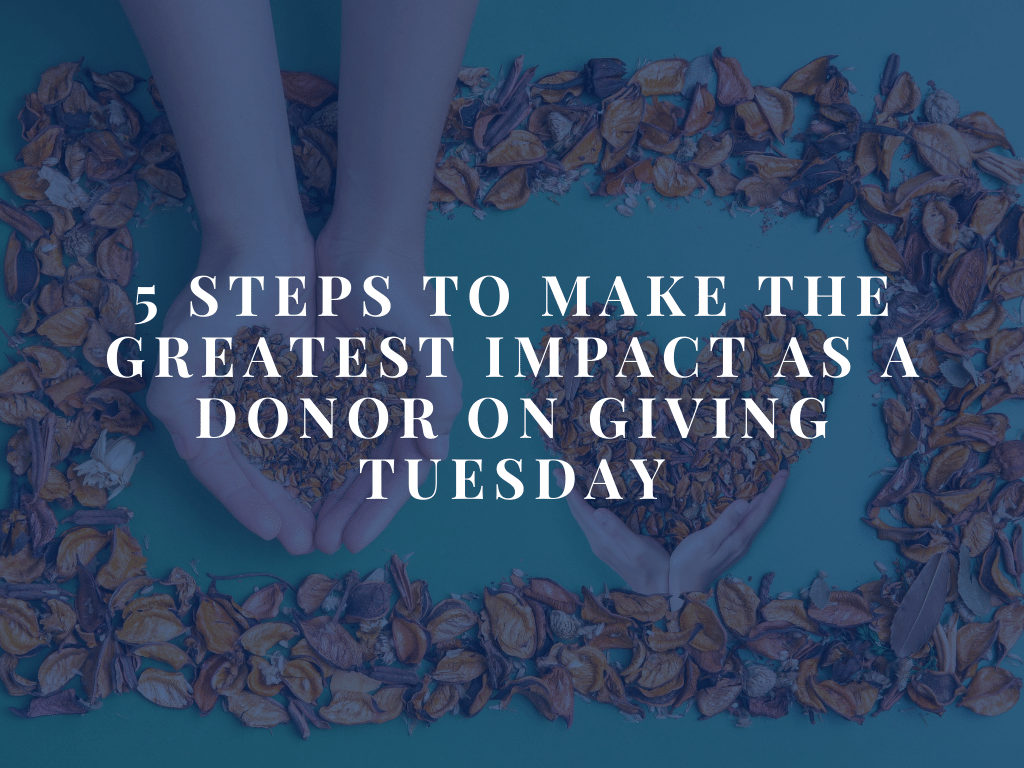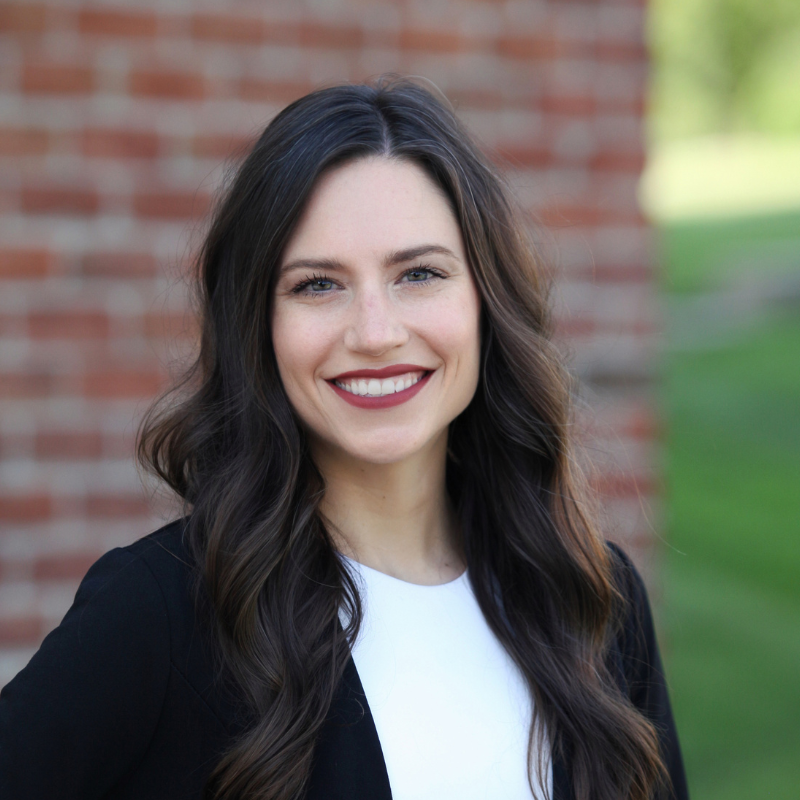
Giving Tuesday is a global day of giving with a goal to unleash the power of radical generosity. According to Giving Tuesday Inc, $2.47 billion was donated on December 1, 2020, by 34.8 million people, just in the United States alone. Many of our clients have been giving generously to their beloved charities for years. However, if you know someone looking to make a difference or newly in a position to be philanthropic, consider sharing this step-by-step article with them. There are many ways to get involved this Giving Tuesday - here are some ideas!
How Giving Tuesday Works
Giving Tuesday was created by Facebook to use the power of social media to connect, inspire, and nurture our community and world. This giving day is observed the first Tuesday after Thanksgiving (following Black Friday and Cyber Monday), and reimagines a world built upon shared humanity and generosity.
Nonprofits all over the world will be participating in Giving Tuesday to raise funds, recruit volunteers, spread awareness, and thank supporters. You can choose to make a monetary donation, gift non-cash assets, volunteer your time, share awareness building materials, or simply spread positive vibes. If you are wondering, “How can I be part of this international day of giving and make sure my gift is doing the most good?” read on for 5 ways to make the greatest impact as a donor on Giving Tuesday.
Research Different Missions
Start by identifying what causes and problems are important to you. You may have a connection to an issue due to personal experience, like providing food to starving children if you grew up in a home where meals were not guaranteed. You may also know somebody affected by a certain issue, like veterans dealing with PTSD or a relative affected by breast cancer. Take some time to reflect on causes you are passionate about and what you would like to help solve in the world.
Next define your values and what type of impact you would like to make. Would you like to create change on a large scale by providing funding for medical research? Or you may decide that a local impact is important to you, so narrowing to nonprofits in your area will make your decision much easier. Once you have a clear vision of what cause you want to support and how you can best help, you will have greater confidence when making your contribution.
Get to Know the Organizations
Now that you have your chosen mission and values, it’s time to make a list of potential organizations. Do a web search to identify nonprofits in line with your values and chosen mission. For example, you may search “Domestic Violence Nonprofits” or “Animal Welfare Nonprofits in my area.” Find agencies that align with your values and beliefs. You can also ask friends, family, or your financial advisor for recommendations of quality organizations they already love.
Once you’ve narrowed it down to a few nonprofits, take a look at their website and social media channels. This will allow you to view what type of impact they make on the world, and who or what they are helping. Look for stories and statistics that showcase how they are using donor money to help those in need. Use screening tools like GuideStar, Charity Navigator, and GreatNonprofits that rate organizations based on public knowledge, information provided by the agency, and donor ratings. You’ll want to make sure you are donating to a legitimate nonprofit with a 501(c)(3) tax exempt status. If you’re not sure, you can search on the IRS website.
Start Early
The end of the year is a busy time for both donors and nonprofits. Ensure you have your ducks in a row and begin researching and vetting organizations early. You can even reach out to the development department (usually listed on their website with contact information) to meet with and discuss how your money would be used. Find out how they are participating in Giving Tuesday and what they are raising money for. They are happy to educate you on what their nonprofit truly needs!
Budgeting is another important reason to plan ahead. Your financial advisor will be able to define a clear plan for your investments and assist you in creating a philanthropy budget. Knowing how much you are able to give may change the trajectory of your giving, and working with a professional will give you ease of mind that you are making responsible moves.
Bonus: Did you know most nonprofits will let you restrict your gifts to a certain program or area of focus? It’s best to talk with the nonprofit directly to ensure that these funds are truly needed, but it’s a great option if you have a specific passion!
Consider a Gift of Non-Cash Assets
Did you know you can donate non-cash assets? Considering much of the world’s wealth is held in illiquid assets, this may be a great option to create an even bigger impact than donating cash. Non-cash assets include assets such as:
- Bequests
- Unneeded required minimum distributions (RMD)
- Life insurance annuities
- Highly appreciated securities (such as stocks, bonds, and mutual funds)
- Cryptocurrency
- And more
In many cases, if the asset is held for more than one year, it provides a unique opportunity to leverage these valuable investments to maximize the impact of your charitable giving. You may not incur the capital gains tax (that you would have incurred if you sold the asset and donated the funds), and may be able to claim a fair market value charitable deduction for the tax year. You could then make the choice to pass on the itemized tax savings in the form of more giving!
The advisors at Carnegie Investment Counsel know how confusing and frustrating it can be donating or moving non-cash assets. Planning, coordinating, and executing a donation such as this is time consuming and complicated. Contact Carnegie today to speak with an advisor about options to donate these unique assets and what tax related benefits apply to you.
Get Your Friends Involved
Giving Tuesday is about coming together as a human race and making the world a better place. Once you’ve found a nonprofit or cause that speaks to you, shout it from the rooftop! Share what you’ve learned with your friends and family and encourage them to support the mission alongside you. Encourage them to sign up for the agency’s email newsletter or follow their social media channels to find out how best to support the mission. You can even share this article with them so they too are prepared for Giving Tuesday!
No matter how you choose to support Giving Tuesday, participating in this global day of giving shows your compassion and generosity. If you identify your cause, create your budget, and implement a plan for your donation, you will be ready to show your support this Giving Tuesday and make a great impact. By coming together, we can make our world a better place!
Need a Financial Advisor?
If you are currently looking for help with financial planning, contact us. We are happy to schedule an introductory meeting at your convenience.



